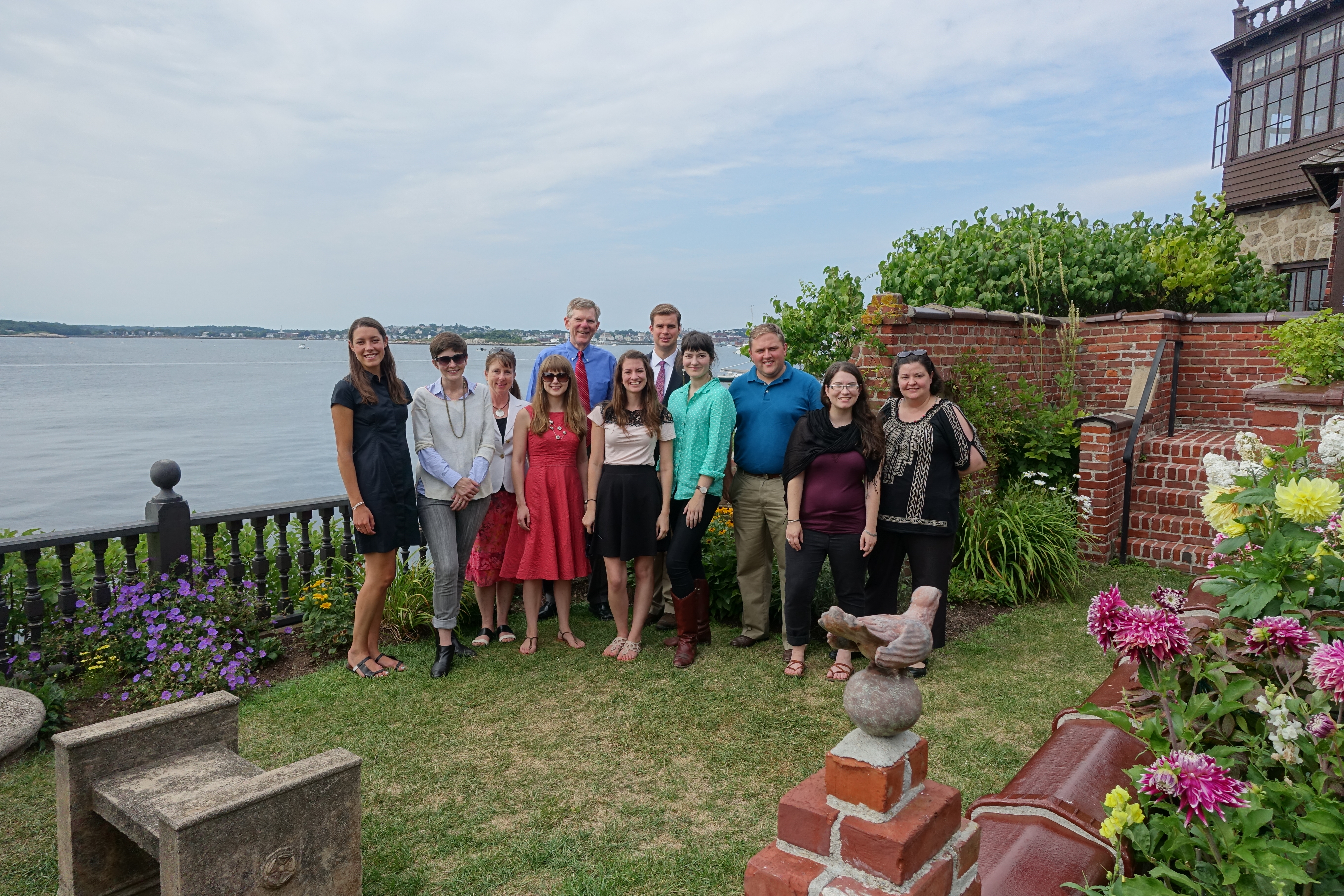Day Two: Salem, Massachusetts
After a whirlwind first day that would set the pace for the rest of the trip, we found ourselves in Salem Massachusetts. Our trip leader, Brock Jobe, planned the day perfectly by choosing two federal style sites to visit: one American, and one Chinese. In this way, we could begin to paint pictures for two different societies at the same moment in time. The day would continue with this theme in the Asian export galleries in the Peabody Essex Museum to examine how these two societies were connected, and how the material world created cultural ties. Lastly, we traveled slightly closer to home as we visited Beauport, the summer home of Henry Davis Sleeper – a friend of Henry Francis Du Pont’s.
After a delicious breakfast at one of Salem’s many bakeries, Dean Lahikainen met our group at the Samuel McIntire house where he introduced us to the federal style of architecture and design. Dean explained that Samuel McIntire (1757-1811) began his career as an architect and overall versatile artist, but soon became known for his wood carvings. While many houses in Salem were designed by McIntire, this house displays the federal style well in its perfectly balanced floors, evenly placed windows, and large neoclassical columns carved of course by McIntire. The interior also houses McIntire carving, with recognizable baskets carved into mantles and doorways.
 Dean Lahikainen explaining the principles of Federal design, with McIntire carved columns behind him
Dean Lahikainen explaining the principles of Federal design, with McIntire carved columns behind him
Moving just down the street to the Peabody Essex Museum we made our way through a hallway flanked by trees and ferns and suddenly arrived in an outdoor Chinese yard. Accompanied by Daisy Wang, the PEM’s curator of Chinese and East Asian Art, and Tara Cederholm, Vice President of the Brookfield Arts Association and the curator who put this project together, Daisy and Tara explained the significance of the house. While the house used to belong to a locally prosperous merchant in a small village during the 18th century, family members began moving to cities and no longer used the space. To the family’s delight, Tara requested to exhibit the house in the United States, and it was brought over, piece by piece, and reassembled in Salem. Fully installed with items belonging to several generations of the family, our group was immediately transported to China – so much so, that Brock proclaimed this site as his favourite house museum for just this reason. Adding to the significance of the space were oral histories told to us by the curators, speaking to the family’s history and daily life experiences. One of the many layers of history embedded in the house are posters for Chairman Mao Tse Tung, as well as writings on the wall warning family members and visitors to be quiet during the culture revolution.
 While we were not permitted to photograph the house, this shows the group before entering the site
While we were not permitted to photograph the house, this shows the group before entering the site
Heading upstairs, our group met with Karina Corrigan (a graduate of our program in ’97) to see the Asian Export galleries. The collection included incredible ivory carvings, furniture with ivory inlay, intact lacquer screens, and hand painted wallpaper similar in many ways to the wallpaper in Winterthur’s Chinese Parlour. The objects and their display highlighted how objects facilitate cultural encounters and ties, and how the ‘west’ was perceived by the ‘east’ as a consumer market during this time. Also seen was a terrific instillation by artist Michael Lin who used items in the collections to transform exhibition spaces. Before heading to our next stop, we were all given some free time to explore the collections. I explored the exhibits created by the PEM’s Curator of the Present Tense.
 An intricately carved ivory tusk
An intricately carved ivory tusk
 Michael Lin’s floor instillation based on armorial motifs in the collection
Michael Lin’s floor instillation based on armorial motifs in the collection
 One of Nick Cave’s fantastic Soundsuits (2013)
One of Nick Cave’s fantastic Soundsuits (2013)
Lastly, we traveled to Gloucester, MA, to meet Martha Van Koevering at Henry Davis Sleeper’s summer house, Beauport. Henry Davis Sleeper was a similar character to Henry Francis Du Pont, and indeed the two were friends for quite some time as Davis Sleeper helped to decorate parts of Winterthur. While Du Pont had nearly limitless funds for his collecting, Davis Sleeper did not and was thus forced to be slightly more creative in his collecting and decorating pursuits. His personality shows in every aspect of the home, as the visitor is delighted with new textures and spaces upon entering each room. All in all, it was a terrific day filled with spaces that transported, engaged, and delighted.
 Architectural elements of the Beauport house
Architectural elements of the Beauport house
 The group outside the Beauport house
The group outside the Beauport house
Natalie Wright, Winterthur Program in American Material Culture, MA University of Delaware (2015)
